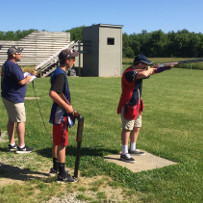
Seeing the Target
How often do you recognize that you didn’t really see the target as you shot? Either you blinked at the wrong time or your barrel came into your primary focus and your eyes were drawn to the barrel.
I believe that my greatest fault (in shooting) is, at times, losing sight of the target for one reason or another. I know that my gun has a beautiful barrel and that I can look and admire it when I’m not on the station calling for a target, but I still have a tendency to let it get in the way.
One of the ways that I try to keep this tendency under control is by holding the gun a little lower at my hold point. I look up and back toward the house I’m shooting, and I am able to see and lock my vision on the target without my beautiful barrel getting in the way or drawing my focus away from the target.
When teaching newer shooters, I start them out with lower hold points. When teaching more experienced shooters, I have them move their hold points a little lower, and they seem to get their game back under their control and bring their scores back up to where they were more satisfied with them.
Holding lower probably won’t hurt your scores but holding too high could.
Stay safe,
Barry Hartmann
Barry Hartmann is an NSSA Master Level and NRA Certified shotgun instructor who teaches American skeet and wingshooting. You can contact Barry at threeat8@aol.com or 918-803-2393.



